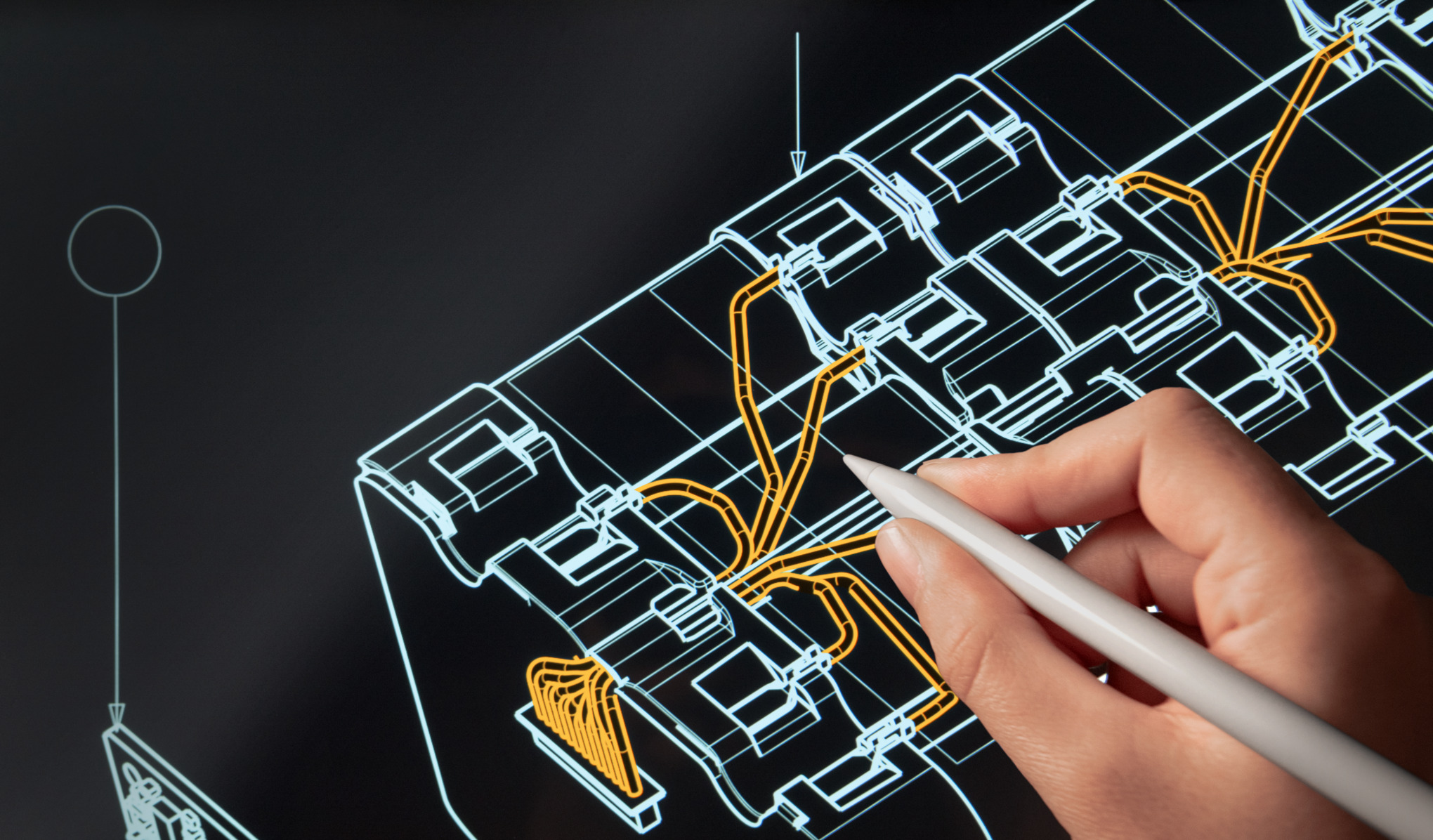Powerful symbiosis: STIHL MS 500¡
Mechanical engineering is STIHL’s core specialty, and the foundation on which the company was grown. However, digitalisation is bringing in new disciplines too – electronics and software engineering are becoming increasingly significant. The STIHL MS 500i epitomises the innovation by perfectly integrating old and new knowledge: The world’s first petrol chainsaw with electronic injection.

THE FIRST IDEA
The year is 1957. Konrad Adenauer is starting his third term as Chancellor, the German economic miracle is in full swing, more and more households feature a television set of their own, Borussia Dortmund are winning the title of German football champion for the second time in a row. And this is the time when an idea makes the first mark that will shape STIHL. Student Hans Peter Stihl is preparing for his graduation. He is tinkering with a BLK engine and wants to equip it with injection. “Of course what I did was not ready for series production, more an investigation of the principle,” remembers the oldest son of company founder Andreas Stihl. A smile flickers across his face – after all, he nonetheless demonstrated it to all the doubters at the time and amazed even experienced professors.

RETHINKING TRIED-AND-TESTED APPROACHES
Although this prototype has not survived the past 60 years, the idea of bringing a hand-held power tool with injection to the market persisted. The STIHL MS 500i is now the first chainsaw with electronic injection. In the early 2000s, it began with special tests at the Karlsruhe Institute of Technology. These resulted in the STIHL TS 500i series project, the first cut-off machine with electronic injection. The MS 500i project was built on this foundation. Project Manager Arno Kinnen (left) and Function Coordinator Clemens Klatt are two heads of a large team which exemplifies a new approach, embracing the fusion of classical mechanical engineering with advanced electronics and software.

High requirements for the new saw
A milestone in performance and lightweight construction while maintaining the distinct STIHL values of longevity and quality: Achieving this meant that more than just the injection had to be specially adapted for the tool. High engine speeds were required, as well as lightweight construction with a robust design, high performance, good acceleration and other features characteristic of STIHL performance – and it had to deliver that even at temperatures as low as minus 40°C. “We built the saw on paper from scratch to get the most out of it,” recalls Arno Kinnen.
STIHL enters new territory
The team had to break entirely new ground in many respects: For instance in the new and further development of injection components and functions, and also, on the classic mechanical engineering side, lightweight construction. Of course, injection offers many advantages in the latter area in particular. Whereas conventional control units draw their energy from rotating magnets in the fan wheel, the injection control unit is supplied by a generator and as such can be freely positioned in the machine. The resulting scope facilitates a significantly smaller fan wheel and therefore a more compact power unit.

A DUET OF DISCIPLINES
STIHL is familiar with the construction and redesigning of carburetor saws. “The additional expertise we have generated in recent years, for example in the fields of measurement technology and software development, is enormous,” reports Clemens Klatt, referring particularly to the coordination processes in software engineering. “We are highly integrative in this area, and cross-department interaction is crucial.” What can now be achieved within a few days of software development used to take several weeks. If the hardware is in place, it is possible to generate major development progress within a very short time by adapting the software.

The result of the perfect duet of disciplines is a unique, intuitive product with unrivaled performance and the best power-to-weight ratio of all professional chainsaws of proven STIHL quality. And yet it is also a battery-free machine built with a “less is more” approach. One result is fewer cable connections and the absence of a carburetor. Focusing on the essential hardware components and intelligent software functions makes the machine robust and low-maintenance. For the first time in a chainsaw, the control unit also has a fault memory, which supports maintenance at the specialist dealer providing service. “We have pushed the limits of what is possible with this machine in almost all respects,” says Clemens Klatt.
The MS 500i in detail
A real powerhouse, a professional machine. But the STIHL MS 500i is even more than that: It is the first chainsaw with electronic injection, the result of many years of experience in classical mechanical engineering and the latest developments in software and electronics.



